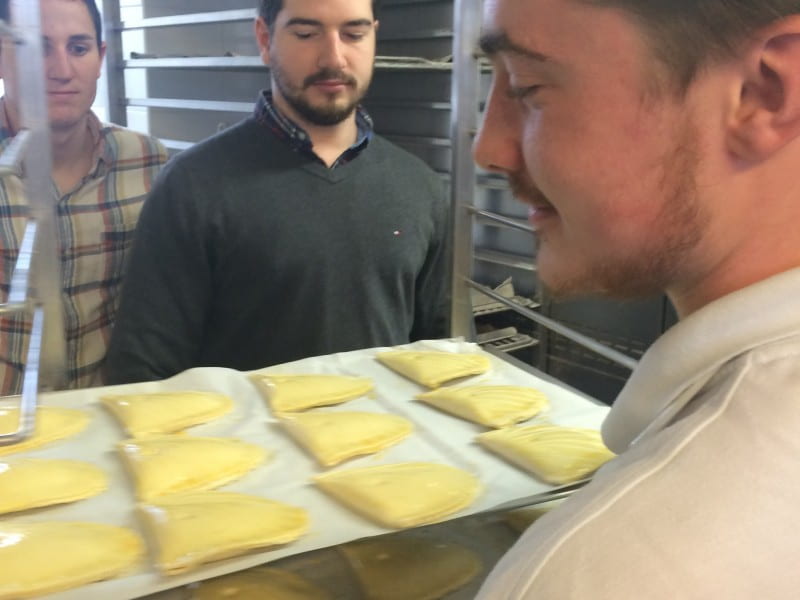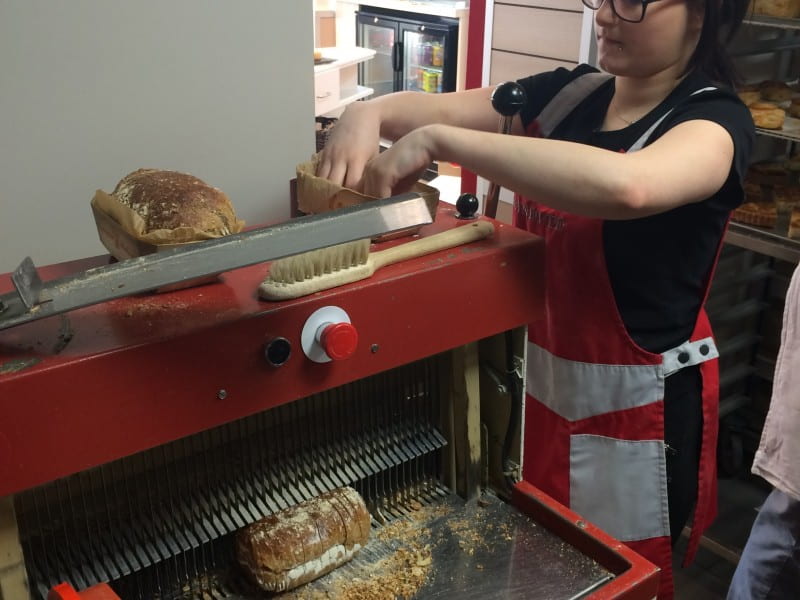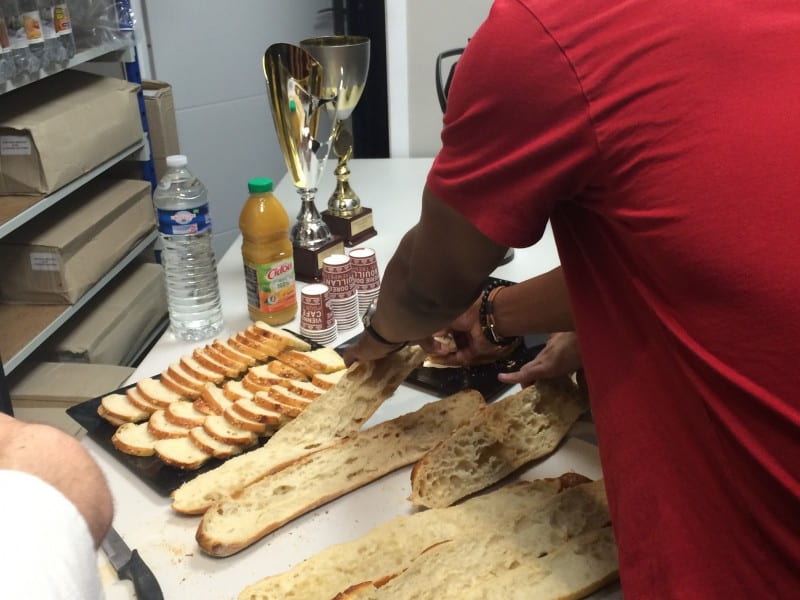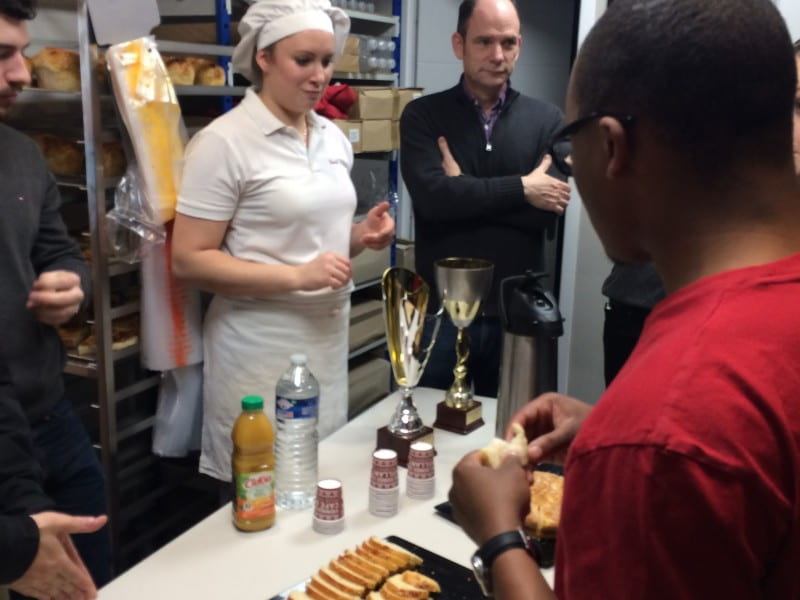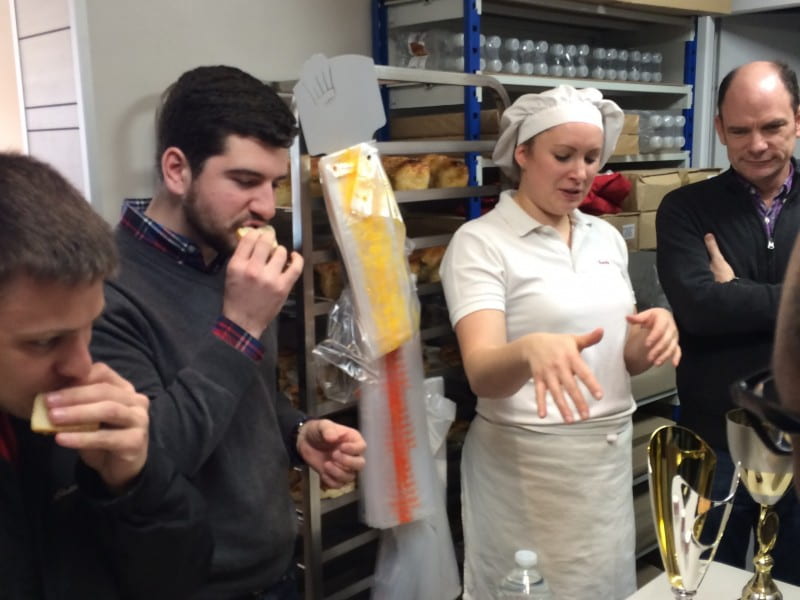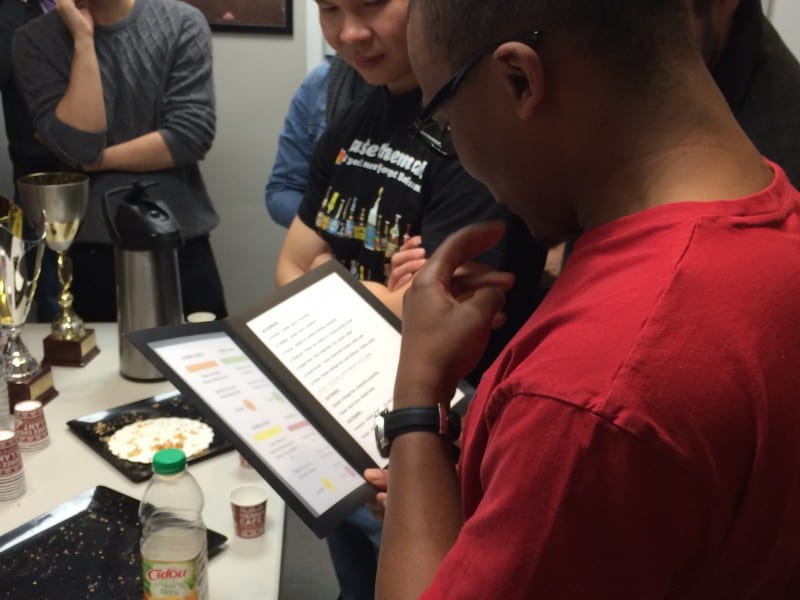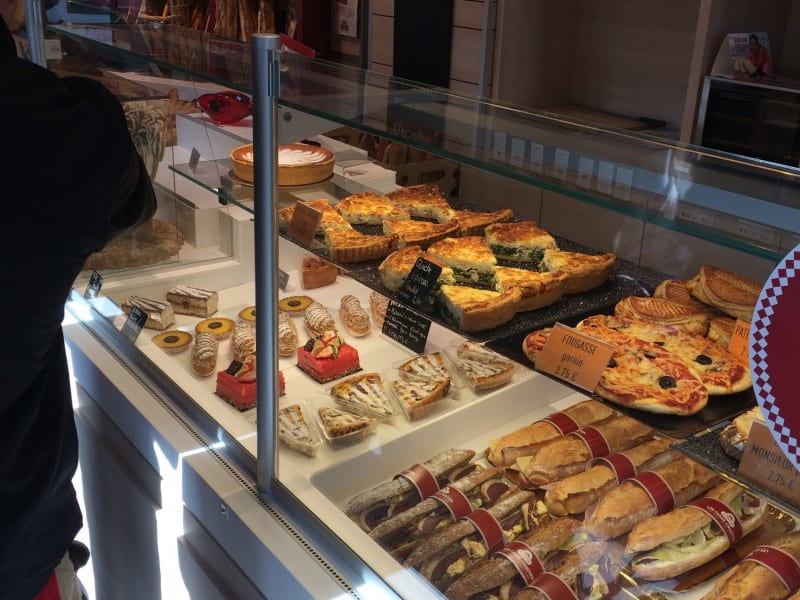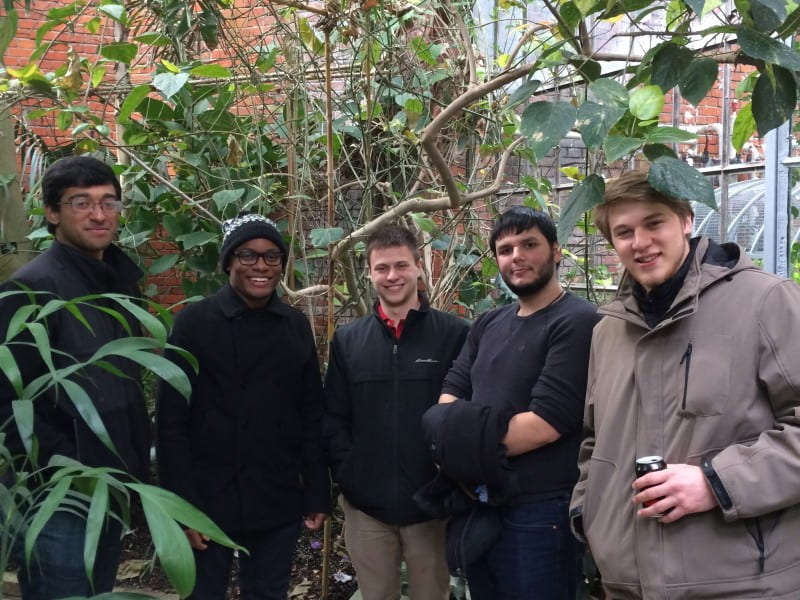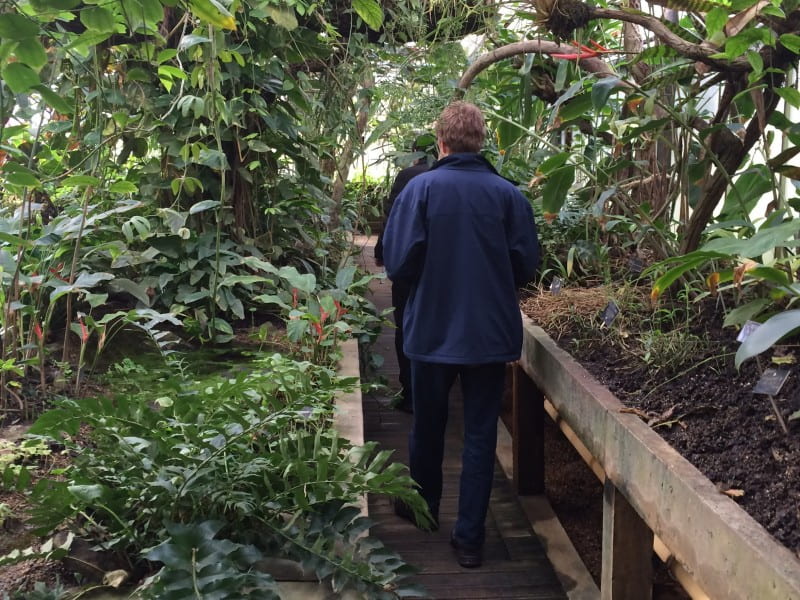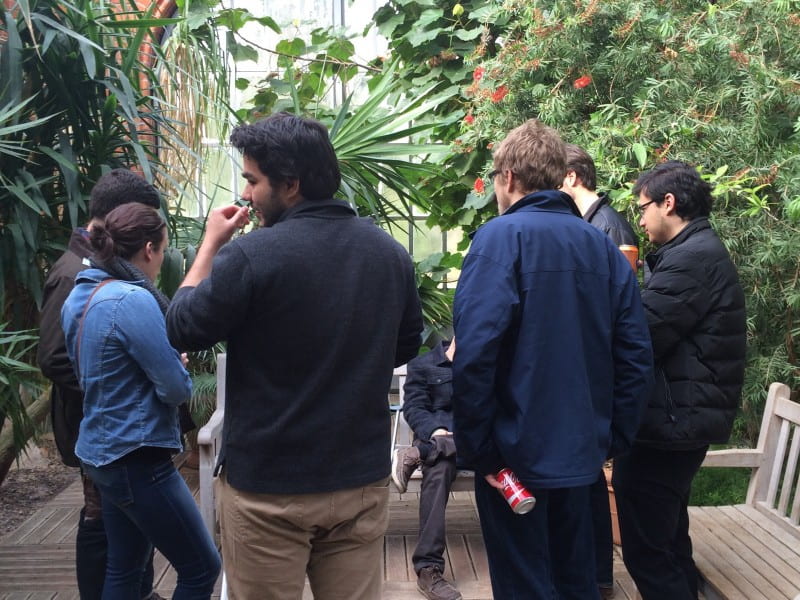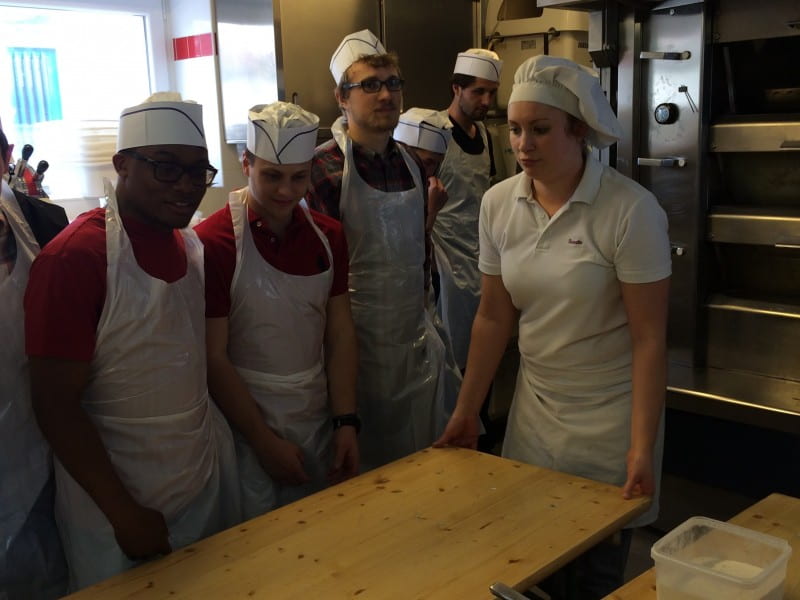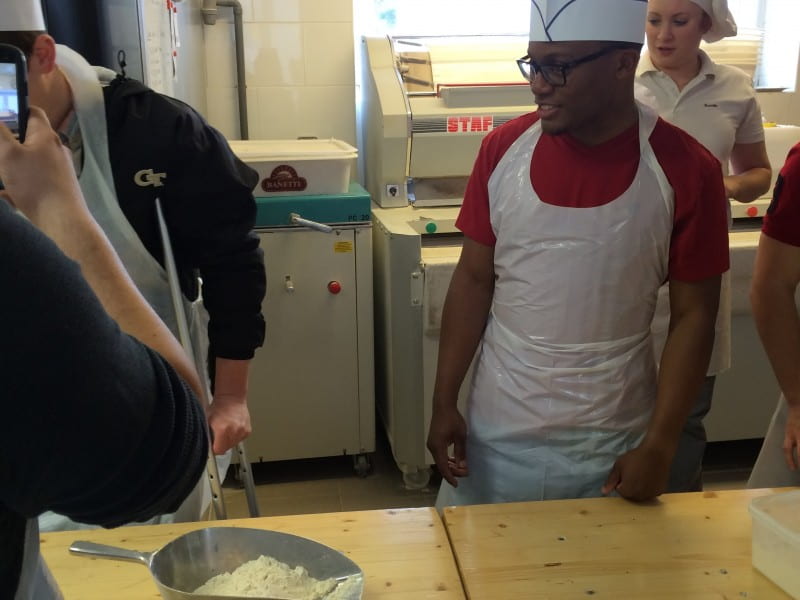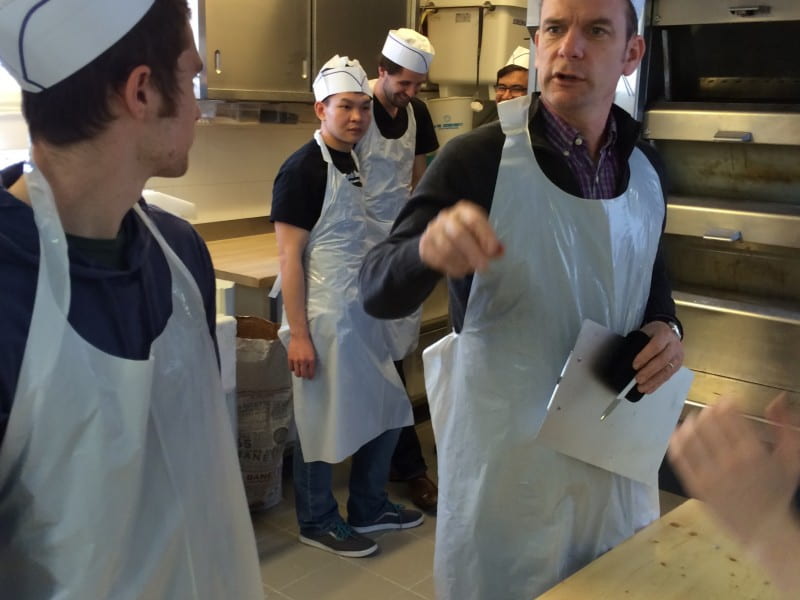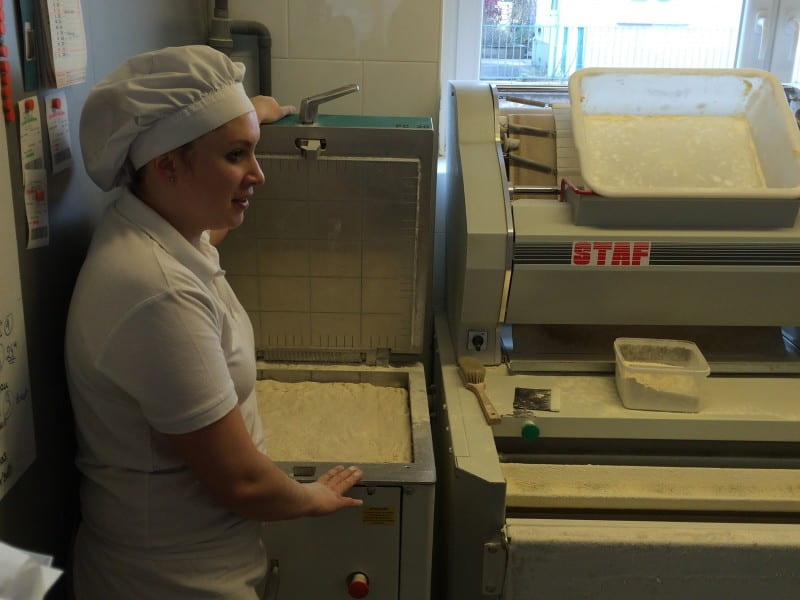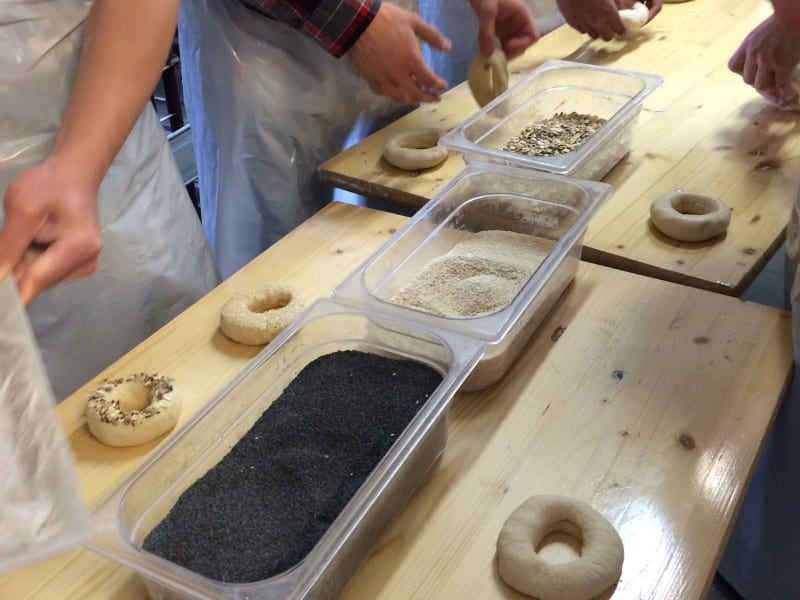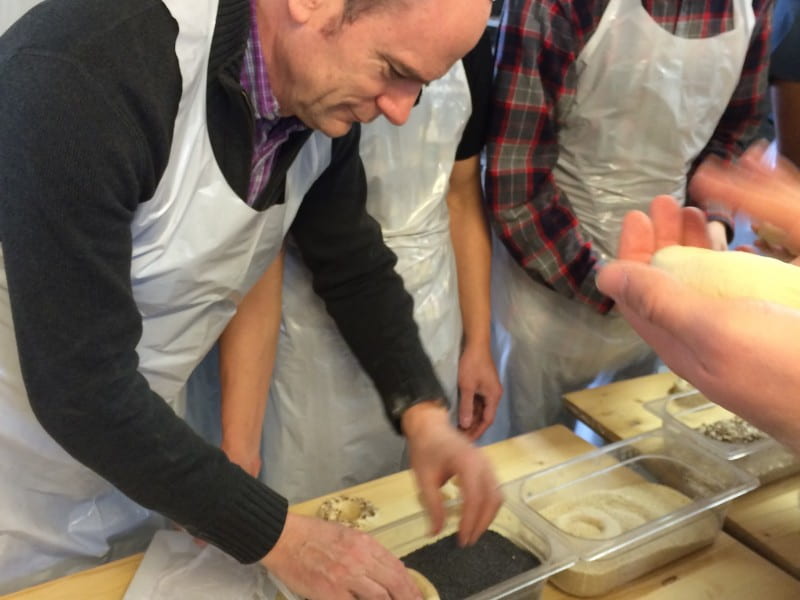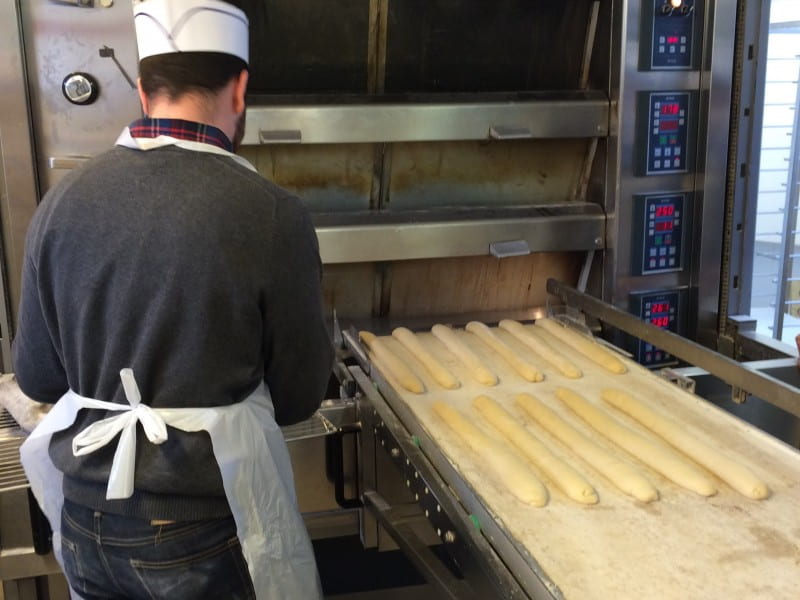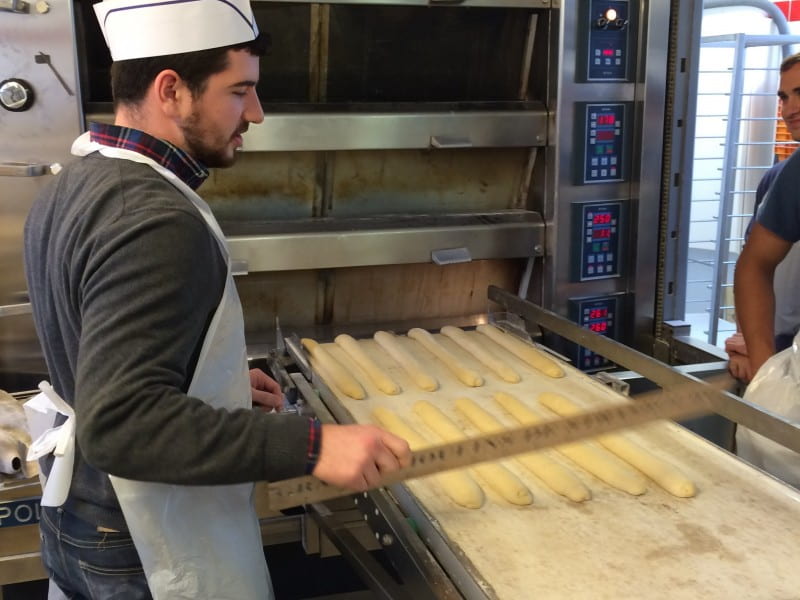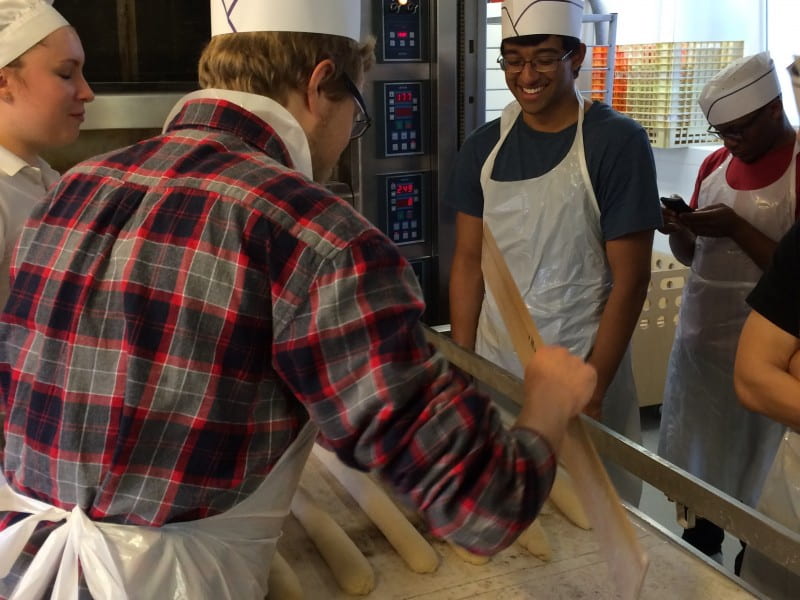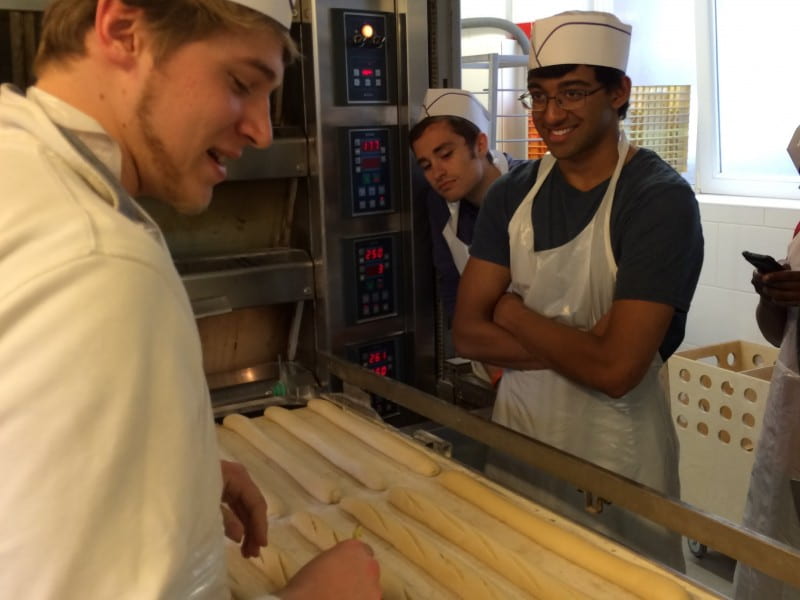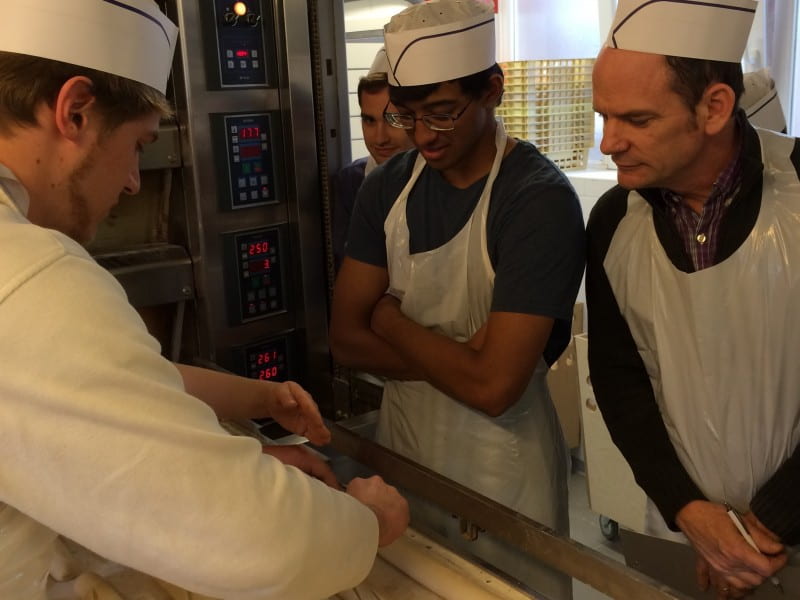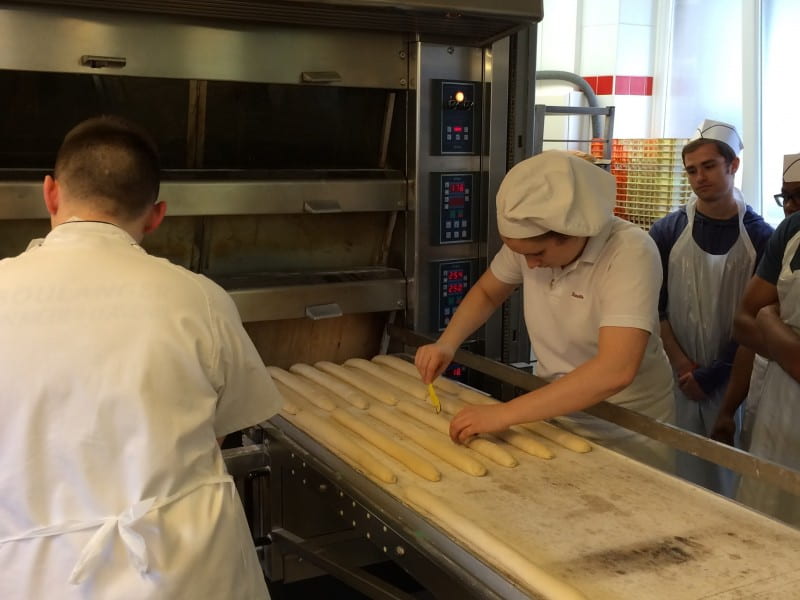This past weekend my History & Sociology class took a special field trip to La Grange aux Pains. La Grange aux Pains is a boulangerie and pâtisserie located in Montigny-les-Metz, France, owned by husband and wife Priscilla and Rémi Pruvost. The bakery has achieved tremendous success since its opening in 2009, and is frequented by local and loyal customers from surrounding areas. It is the ideal spot for one craving a fresh baguette or pastry on their way to work. La Grange aux Pains is recognized as a boulangerie and pâttiserie because each day, everything item is baked fresh, (Fun fact: Large bakery enterprises such as Paul cannot call themselves a boulangerie or pâttiserie for this very reason), from chocolate covered croissants to curry chicken paninis to mini beignets. And that’s what makes La Grange aux Pains all the more special.
Our trip began with a detailed tour of the facility. Priscilla led us to the back room of the bakery, where they receive daily shipments of ingredients and supplies. Next, we entered the main baking room, where all of the magic happens. We watched as two apprentices prepared croissants from scratch, folding triangular pieces of dough into perfect half-crescent moon shapes. Granted, all of our mouths were watering at this point, and our tour had just begun. Next we were shown the different pieces of machinery used in the baking process. A giant 3-level oven took up a large portion of the room. Priscilla and Rémi use the oven to bake baguettes, bagels, and other various forms of bread. Other machines in the room included a spiral mixer in the corner, along with a dough cutter and a baguette moulder placed along a table. These machines, now used frequently to help speed up production, did not exist some time ago. French bakers hand-crafted their bread and pastries with art and precision, often beginning the baking process at early and odd hours. Modern machinery has since replaced the need for so much manual labor. However, it is still necessary that skilled bakers like Priscilla and Rémi are present. For example, water temperature is an extremely important factor to consider when baking bread, as it can affect bread consistency and size. Often times, a baker is needed to go outside and get a feel for the weather. Depending on whether it’s hot, rainy, or cold, the baker will then adjust the water temperature accordingly. This is certainly not, and may never be, a job for an industrial machine.
Next, Priscilla led the group to a smaller room, where we ate samples of some of her staple bread and pastries. She pointed out the key differences in two of the baguettes she served us, regarding their shape, size, texture, and color. One baguette had been hand-made (formally called a banette), and the other had been made by a machine. We could barely tell the difference as Americans, but according to Priscilla, the French can point them out quite easily. After lunch at the Botanical Garden of Metz (ham sandwiches and chicken paninis prepared by none other than Priscilla), we returned to La Grange aux Pains for a special baking lesson. Yes! We got to bake our very own baguettes and bagels from scratch! Each of us found a spot alongside a long, wooden table, fresh dough in hand, and watched Priscilla and Rémi as they gave step-by step instructions on to how to shape our soon-to-be bread. The best part? We got to take everything we baked home with us! And to top off an already wonderful baking experience, Priscilla gave each of us a parting gift: a loaf of sweet bread topped with tiny white chocolate chips.
I’ve been on some pretty cool field trips in life, but I have to say, my experience at La Grange aux Pains takes the cake (pun intended). How many students can say they baked fresh bread, under the instruction of two highly-skilled French bakers, at an authentic boulangerie and pâtteserie this semester? Only fifteen, and I’m so thankful I was one of them!

